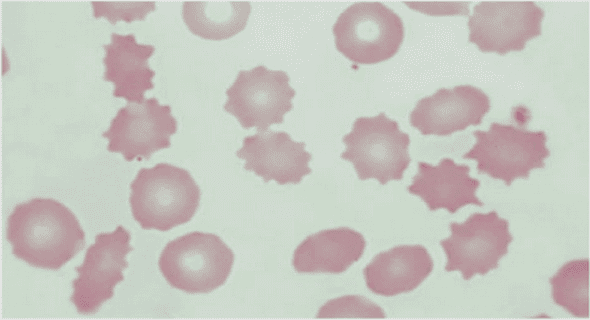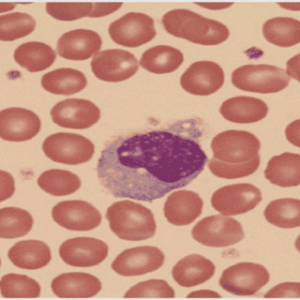(Downloads - 0)
For more info about our services contact : help@bestpfe.com
Table of contents
1 Introduction
1.1 Bibliographical review
1.1.1 Gene repertoires and the organization of prokaryotic genomes
1.1.2 The dynamics of the pangenome
1.1.3 The roots of bacterial pangenomes
1.1.4 Functional role of the pangenome
1.1.5 Horizontal gene transfers and its role in speciation
1.1.6 Reconstructing genomes histories to reveal past and present ecological adaptations
1.2 Reconstruction of ancestral genomes and reconciliation of gene and species histories
1.2.1 Brief history of phylogenetics applied to genes and species
1.2.2 Concepts of ancestral genome reconstruction and state of the art
Phylogenetic profile mapping methods
Reconciliation methods
1.3 Glossary
1.4 Outline
2 Evolution of gene repertoires in genomes of A. tumefaciens reveal the role of ecological adaptation in bacterial cladogenesis
2.1 Agrobacterium tumefaciens, a model organism for the study of bacterial cladogenesis and the quest for ecological adaptations
2.2 Preamble to the comparative genomic studies
2.3 Probing the ubiquity of genes in A. tumefaciens genomes to characterize speciesspecific genes: insights into the specific ecology of A. fabrum
2.3.1 Introduction
2.3.2 Manuscript
2.4 Reconstructing ancestral genomes of A. tumefaciens reveals ecological adaptations along their diversification
2.4.1 Introduction
2.4.2 Results
2.4.2.1 Genomic sequence dataset
2.4.2.2 Species phylogeny
2.4.2.3 Reconstruction of ancestral genomes
Reconciliation of genome and gene tree histories
Regional amalgamation of gene histories refines the precision of reconciliations
2.4.2.4 Agrogenom database
2.4.2.5 Genome histories reveal selective pressures that shaped gene
Dynamics of gains and losses in ancestral genomes
Patterns of gene transfer: prevalence within species and among rhizobia
Evaluation of the selection pressures acting on transferred blocks of genes
2.4.2.6 Homologous recombination maintains cohesion of species
2.4.2.7 Effect of the particular architecture of A. tumefaciens genomes on gene evolution
The linear chromid is more recombinogenic than the circular chromosome
Migration of genes between replicons accross A. tumefaciens history
2.4.2.8 Clade-specific genes: insights into the possible ecological speciation of clade ancestors
Genomic synapomorphies of genomovar G1
Genomic synapomorphies of genomovar G8 and [G6-G8] clade
Genomic synapomorphies of [G5-G13] clade
Genomic synapomorphies of [G1-G5-G13] clade
Genomic synapomorphies of the A. tumefaciens complex
2.4.3 Discussion
2.4.3.1 Precise reconciliations using regional signal in genomes .
Local reconciliation of histories of orthologs in multicopy gene trees
Reconciliation of gene blocks provide more accurate scenarios
2.4.3.2 A history of Rhizobiales, from the point-of-view of the entire genome
2.4.3.3 Role of recombination in species cohesion
2.4.3.4 Ancestral genome content and evolutionary dynamics of genes .
2.4.3.5 Clusters of clade-specific are under purifying selection for their collective function
2.4.3.6 Clade-specific genes in the light of speciation models
2.4.3.7 Ecological adaptations in A. tumefaciens: a history of variation of shared traits
Hybridization of genomovar G1 and G8: ecological convergence or diversification?
Guilds of A. tumefaciens species co-exist by partitioning common resources
2.4.3.8 Secondary (and third) replicon of A. tumefaciens genomes are the place of genomic innovation
The linear chromid is highly plastic and recombinogenic but stabilizes adaptive genes
Anunforeseen role for pAt plasmids as host of clade-specific adaptations
2.4.4 Conclusion
2.4.5 Material and Methods
2.4.5.1 Genome sequencing and assembly
2.4.5.2 Construction of Phylogenomic Database
2.4.5.3 Reference species tree
2.4.5.4 Reconciliation of gene tree with the species tree
2.4.5.5 Block events reconstruction
2.4.5.6 Definition of clade-specific genes from phylogenetic profiles
2.4.5.7 Ancestral location of genes on replicons
2.4.5.8 Tree Pattern Matching
2.4.5.9 Detection of recombination in core genes
2.4.5.10 Functional homogeneity of gene blocks
2.5 Supplementary Figures
2.6 Supplementary Tables
2.7 Supplementary Material
2.7.1 Comparison of several hypotheses for the core-genome reference phylogeny
2.7.2 Gene tree reconciliations: detailled procedure
2.7.3 Block event reconstruction: algorithms
2.7.4 Of the complexity of interpreting ’highways’ of genes transfers
2.7.5 Clade-specific genes: insights into the ecological properties of clades
2.7.5.1 Genomic synapomorphies of genomovar G1
Chemotaxis and phenolic/aromatic compound degradation pathways
Amino-acid catabolism
G1+G8: Exopolysaccharide biosynthesis
G1+G9: Extra-cellular secretion
2.7.5.2 Genomic synapomorphies of genomovar G8 and [G6-G8] clade .
2.7.5.3 Genomic synapomorphies of [G1-G5-G13]
2.7.5.4 Genomic synapomorphies of the A. tumefaciens complex
Central metabolism
Cell wall and outer membrane
Informational processes
Sensing
Iron metabolism
Detoxification
2.7.6 Selected cases of large transfer events
2.7.7 Bioinformatic scripts, modules and libraries
2.8 Comparative genomics of A. tumefaciens: Synthesis and perspecitves
2.8.1 Comparison of outcomes from two different studies of the pangenome of A. tumefaciens
2.8.2 A more complete model for the diversification of A. tumefaciens
2.8.3 Perspectives
3 GC-biased gene conversion shapes the bacterial genomic landscape
3.1 GC-content evolution in bacterial genomes: the biased gene conversion hypothesis expands
3.1.1 Supplementary Figures
3.1.2 Supplementary Tables
3.1.3 Supplementary Material
Recombination detection methods
3.2 Heterogeneity of genome GC-content and gene population sizes
3.2.1 Hypothesis: large gene population size enhances gBGC
3.2.2 A complex interplay of mutation, selection and recombination
3.3 Validation of results in A. tumefaciens
4 Final Discussion & Perspectives
5 Annexes
5.1 Ecophysiology of the arsenite-oxidizing bacterium Rhizobium sp. NT-26
5.1.1 Introduction
5.1.2 Manuscript
5.2 Acquisition of protelomerase and linearization of secondary chromosome led to the emmergence of a major clade within Rhizobiaceae
5.2.1 Introduction
5.2.2 Manuscript



